How to Strap an Ankle – Step-by-Step Guide for Beginners

happen we least expect them. The last thing you want is a twisted ankle putting a damper on your training performance. Ankle strapping can protect your foot and give you the confidence you need to throw in powerful kicks. But how to strap on an ankle using compression ankle support? Let’s find it out in this step-by-step guide.
How to Strap an Ankle using Compression Ankle Support
A compression ankle support is an elasticated, sock-like support which protects the ankle and foot from high impact sports injuries. AQF Sports compression ankle sport has an easy “slip and slide” wearing method to save you time and offer the most protection.
- Foot Position: Keep your foot flat on the ground.
- Get Ready: Hold the ankle support in both hands
- Slide In: Gently insert your foot, heel at the back, toes at the front.
- Adjust Fit: Move the ankle strap around to ensure a snug fit.
(Most compression should be around the ankle joint)
- Check Comfort: Flex your ankle to ensure it’s comfortable.
- Test It: Stand and walk to ensure the support does not slip off.
- Removal: Slide the support off when done with your session.
- Care & Store: Handwash using mild detergent.
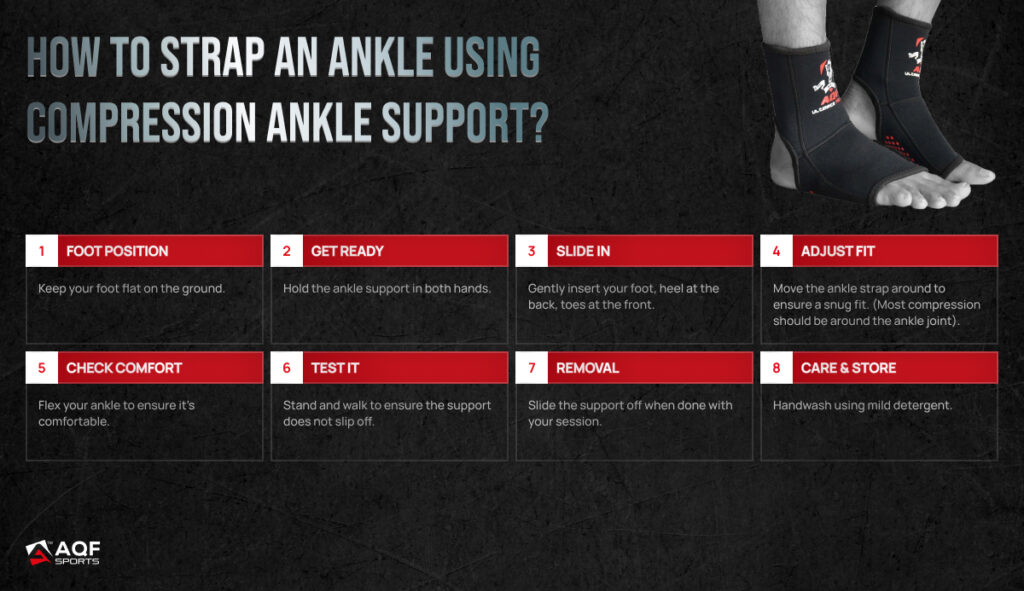
Step 1: Unwrap The Ankle Support
- Carefully open the packaging and take out your new compression ankle support.
- Check it for any visible defects like tears, loose stitches, or irregularities. If you spot any issues, contact the manufacturer or the store where you bought it for a replacement.
- Check the Size
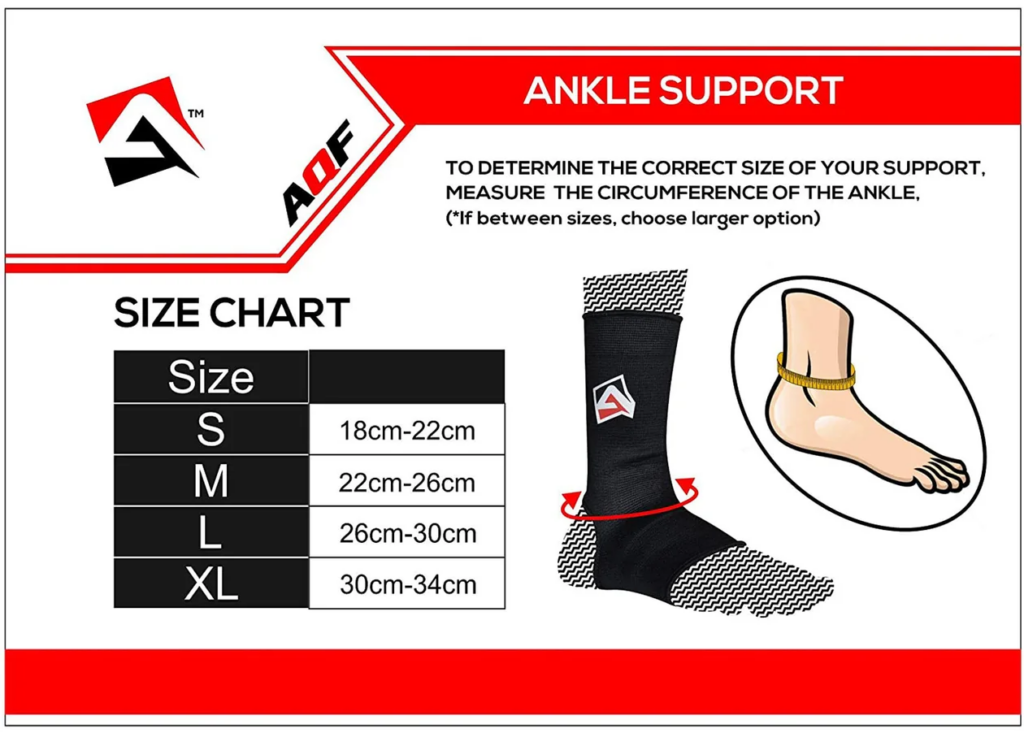
Step 2: Check the Compression Level
- Read the instructions on the packaging or included leaflet to understand the compression level of your support.
- Compression levels range from light (low compression) to extra firm (high compression).
Ankle Support Compression Level Chart
| Compression Level | Suitable for High-Impact Sports | Benefits |
| Mild (8-15 mmHg) | – Occasional high-impact sports participation | – Reduces muscle fatigue |
| – Shorter durations of high-impact activity | – Provides general leg support | |
| – Improved circulation during workouts | ||
| Moderate (15-20 mmHg) | – Regular participation in high-impact sports | – Aids in muscle recovery |
| – Endurance sports like running or basketball | – Reduces muscle soreness | |
| – Preventive measure against muscle injuries | – Enhances endurance during training | |
| Firm (20-30 mmHg) | – Athletes with a history of muscle injuries | – Provides significant muscle support |
| – Sports involving repetitive high-impact movements | – Reduces risk of overuse injuries | |
| – Post-workout recovery in high-impact sports |
Step 3: Pre-Wear Preparation
- Wash your hands thoroughly before handling the ankle support.
Elevate your foot to reduce swelling before putting on the ankle support.
Step 5: Put On the Compression Ankle Support
- Sit down comfortably if needed.
- Slide your foot into the support and position your heel in the middle of heel hole. Your toes should slide into the front.
- Gently pull the ankle support up your ankle and calf.
- Adjust the fit to make sure it’s snug but not uncomfortable. The most compression should be around your ankle joint.
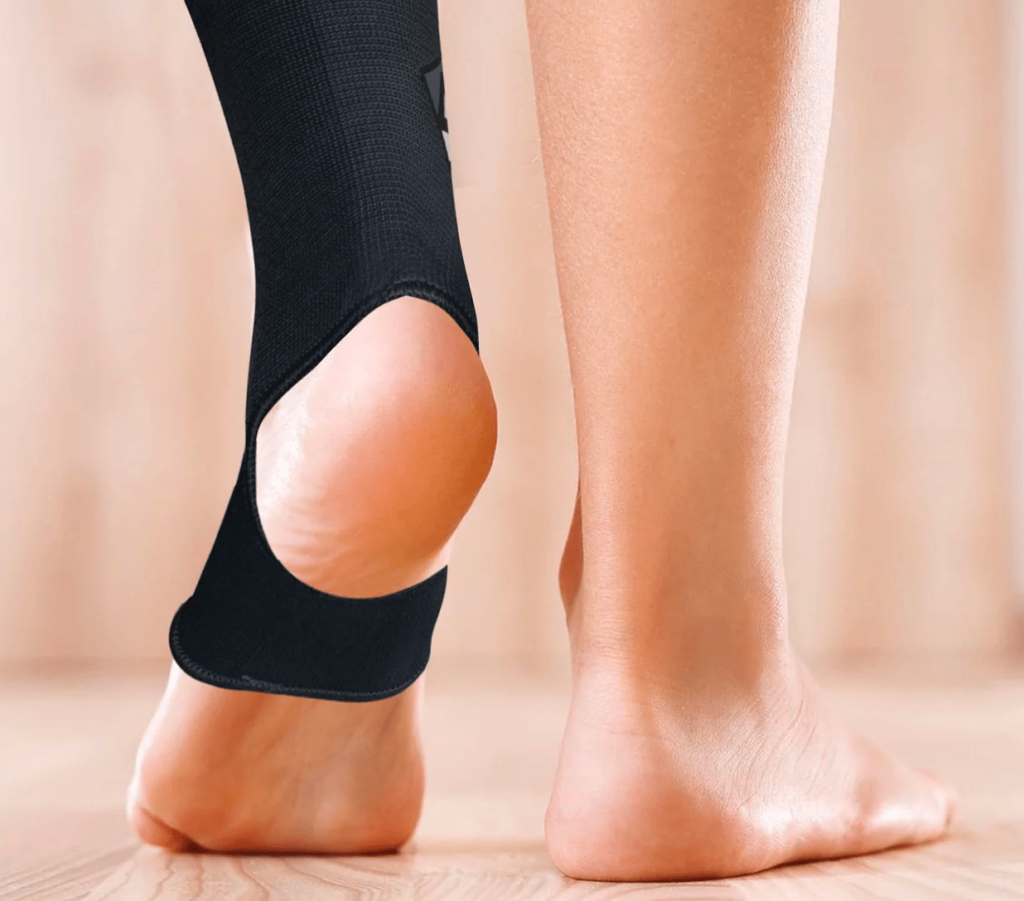
Step 4: Cover Vulnerable Foot Areas
- The compression ankle support should cover your entire ankle area. It starts just above your ankle joint and extends up your calf.
Ankle support should cover the following key foot areas:
- Anterior Talofibular Ligament (ATFL): Located on the front of the ankle
- Calcaneofibular Ligament (CFL): Found on the lateral (outer) side of the ankle
- Posterior Talofibular Ligament (PTFL): Situated on the backside of the ankle
- Deltoid Ligament: This ligament complex on the inner (medial) side of the ankle
- Peroneal Tendons: Situated on the outer (lateral) side of the ankle
- Achilles Tendon
Step 6: Test Comfort and Fit
- Move your ankle gently to ensure the support feels comfortable and supportive. Check for any tight spots or discomfort.
- If it feels too tight or uncomfortable, make adjustments as necessary.
Step 7: Use it Daily
- Wear the compression ankle support as recommended by your healthcare provider or as indicated on the packaging.
- If you experience unusual discomfort, pain, or skin irritation, remove the support and consult a healthcare professional.
Step 8: Clean and Care
- To take off the support, gently pull it down your calf and off your foot.
- Hand wash it using mild detergent and cool water, avoiding bleach or fabric softeners.
- Rinse thoroughly and gently squeeze out excess water without wringing or twisting.
- Lay it flat to air dry, away from direct sunlight or heat sources.
- Store it in a cool, dry place when not in use.

Compression Ankle Support Protects Your Foot Anatomy
Anterior Talofibular Ligament (ATFL):
Situated at the front of the ankle, the ATFL connects the fibula (lower leg bone) to the talus bone in the foot. It’s a common site for ankle sprains and is well-supported by a compression ankle brace.
Calcaneofibular Ligament (CFL):
Found on the lateral side of the ankle, the CFL runs from the fibula to the calcaneus (heel bone), providing crucial lateral stability. A compression ankle support helps reinforce this area.
Posterior Talofibular Ligament (PTFL):
Located at the back of the ankle, the PTFL connects the fibula to the talus. It contributes significantly to the overall stability of the ankle joint and benefits from compression support.
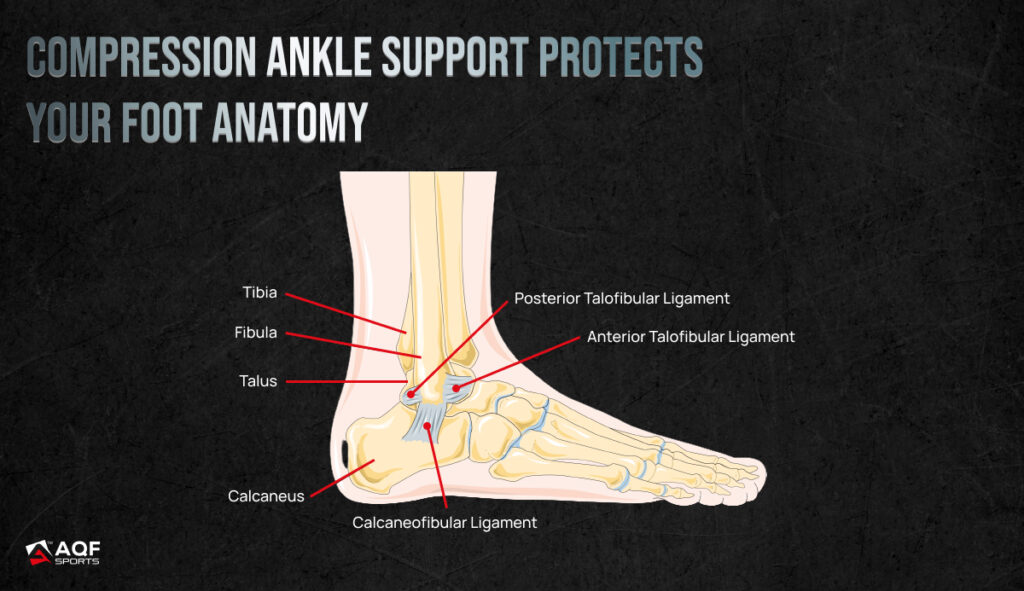
Deltoid Ligament:
The deltoid ligament complex, situated on the medial (inner) side of the ankle, consists of several ligaments connecting the tibia (shinbone) to various bones in the foot. It plays a vital role in preventing medial ankle injuries and is effectively supported by a compression ankle brace.
Plantar Fascia:
While not a ligament, the plantar fascia is a substantial band of tissue on the sole of the foot.
Plantar fasciitis affects approximately 10% of athletes.
In some instances, a compression ankle support may extend downward to offer support and relief, especially for conditions like plantar fasciitis.
Achilles Tendon:
Depending on the design, some compression ankle supports may extend upward to cover the Achilles tendon, which connects the calf muscles to the heel bone. This added support can be beneficial for those with Achilles tendon concerns.
Peroneal Tendons:
Positioned on the lateral side of the ankle, the peroneal tendons can also benefit from compression and support to reduce the risk of injury, especially during activities that involve lateral movements.

Wearing an Ankle Support Prevents Common Foot Injuries
These are some common foot and ankle injuries which can occur in high-impact sports and may be prevented by wearing an ankle support:
Ankle Sprains:
High-impact sports often involve sudden changes in direction and jumping, making athletes susceptible to ankle sprains. Ankle supports can help stabilize the ankle joint and reduce the risk of sprains.
Ankle sprain saccount for approximately 15-30% of all sports-related injuries.
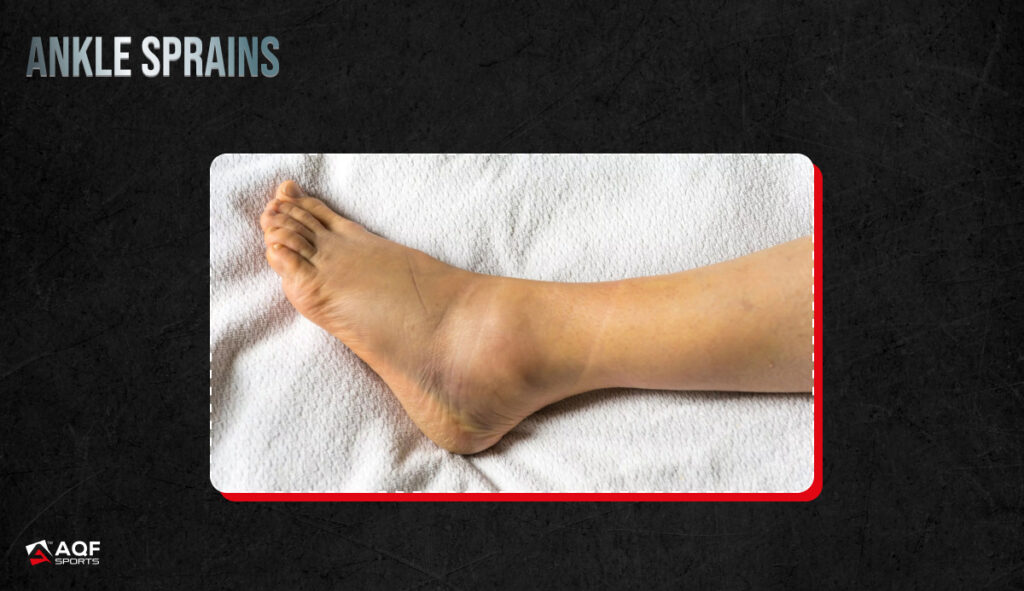
Stress Fractures:
High-impact activities can lead to stress fractures in the bones of the foot and ankle. Ankle supports with shock-absorbing features can help cushion impacts and reduce the risk of fractures.
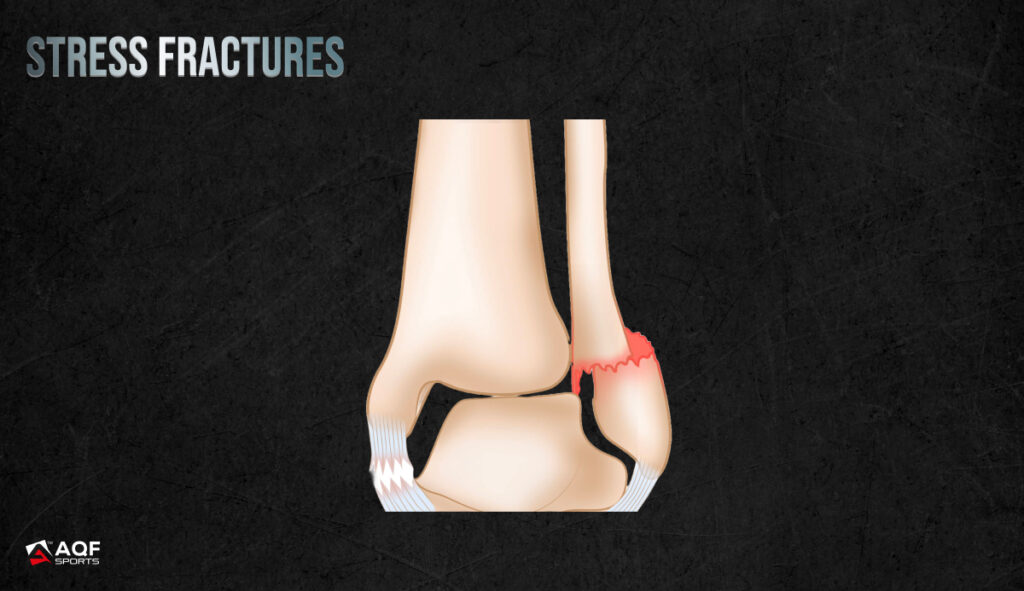
Turf Toe:
This injury occurs when the big toe is hyperextended, often during activities like football or wrestling. Ankle supports with a reinforced toe area can protect against turf toe. It also prevents other toe injuries like toe sprains and jamming.
Turf Toe affects roughly 5-10% of athletes.
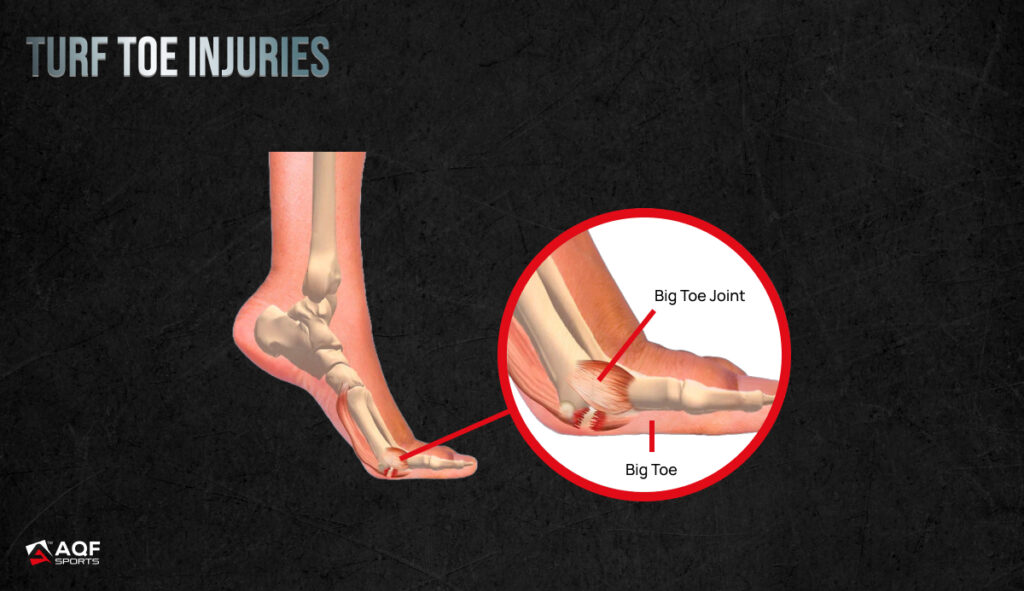
Metatarsal Fractures:
The metatarsal bones in the foot can fracture from impacts or repetitive stress. Ankle supports with cushioning can help absorb shock and protect these bones.
Lisfranc Injury:
High-impact sports may lead to midfoot injuries, including Lisfranc injuries. Ankle supports that immobilize the midfoot can aid in recovery and prevent further damage.

Ligament Tears:
High-impact sports often over-stretch and tear the ligaments around the ankle joint, particularly the anterior talofibular ligament (ATFL), calcaneofibular ligament (CFL), and posterior talofibular ligament (PTFL).
Achilles tendon injuries has a of 6-18% incidence rate in all sports injuries.
Heel Contusions:
High-impact activities can result in painful heel contusions or bruises. Ankle supports with padding around the heel can offer protection and alleviate discomfort.
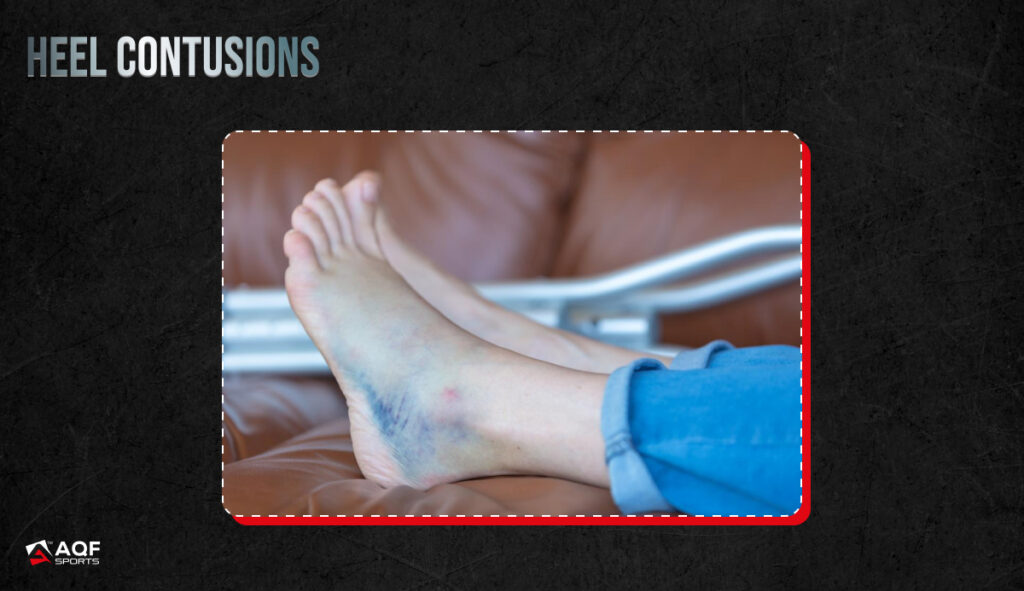
How Does Compression Support Protect Your Ankle [Science Explains]
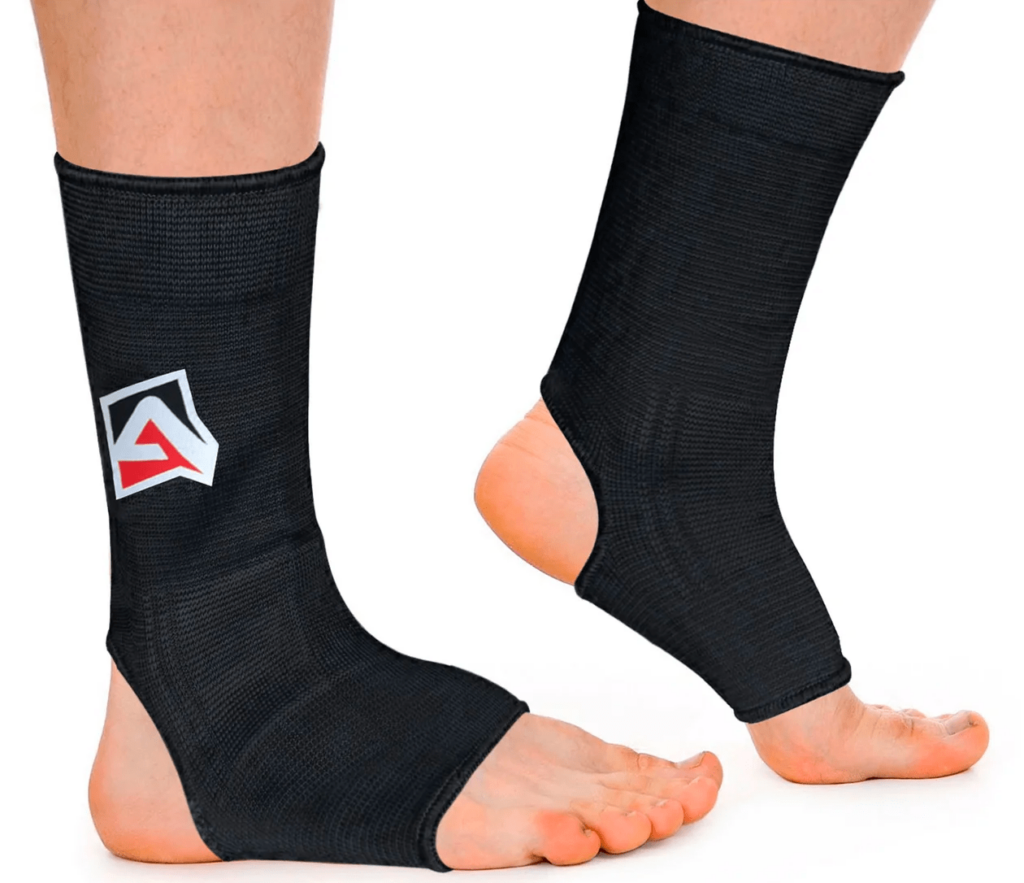
Improves Blood Flow:
Ankle compression boosts blood flow by gently squeezing the blood vessels in your lower leg. [1] This helps blood return to your heart more efficiently, reducing the risk of swelling and fatigue in your ankles and feet.
Reduces Swelling:
Compression garments put pressure on tissues, preventing excessive fluid buildup in your ankle and foot. [2] This is especially helpful for preventing post-activity swelling.
Ankle Stability:
Compression provides mechanical support to your ankle joint and surrounding structures, like ligaments and tendons. This minimizes excessive joint movement, decreasing the risk of overstretching or injury during intense activities.
Muscle Support:
Compression gear supports your calf muscles, Achilles tendons, and other leg muscles. This reduces muscle vibration and micro-tearing during repetitive motions, lowering the risk of muscle fatigue and injury.
Better Proprioception:
Compression enhances your sense of where your body is in space (proprioception) [3]. This improves joint stability and reduces the risk of unexpected twists or missteps.
Temperature Control:
Some compression materials help regulate muscle and joint temperatures, preventing muscle cramps and strains caused by extreme temperatures.
Pain Relief:
Compression’s gentle massaging effect on your skin and tissues can relieve discomfort from conditions like plantar fasciitis or Achilles tendonitis.
Lymphatic Drainage:
Compression aids the lymphatic system in removing waste and reducing inflammation in your ankle and foot.
The Bottomline
Ankle injuries are more common than you think in high impact sports. That is why you need to find propert ankle support to protect your foot from painful tears and injuries. Strap on a compression ankle support to get the much needed foot protection and confidence boost.
References:
[2] https://www.healthline.com/health/swollen-ankle-and-leg
[3] https://www.sciencedirect.com/topics/physics-and-astronomy/proprioception





